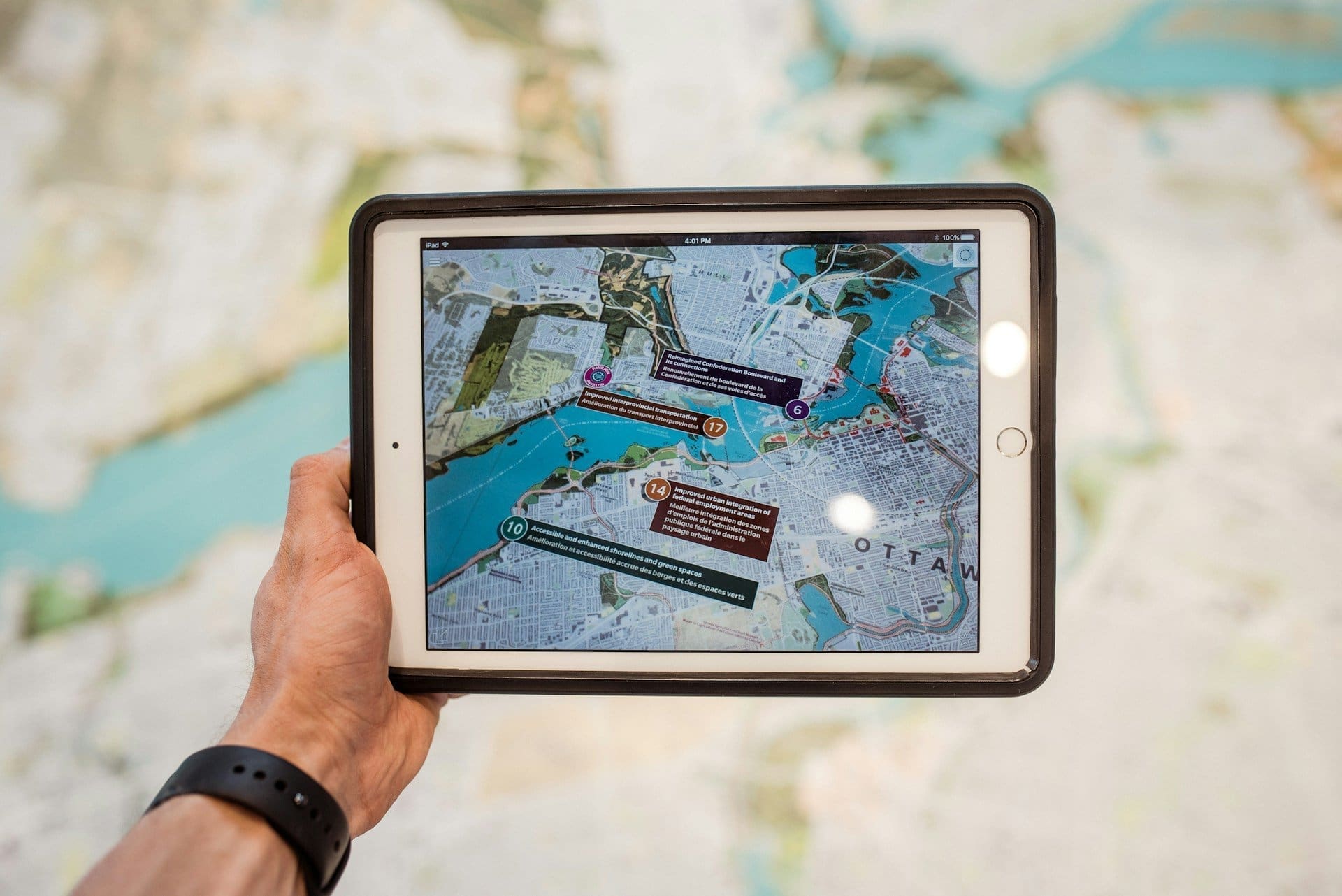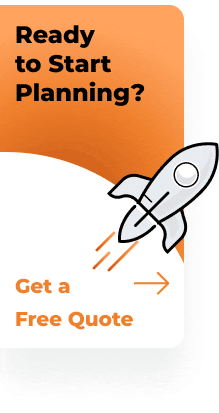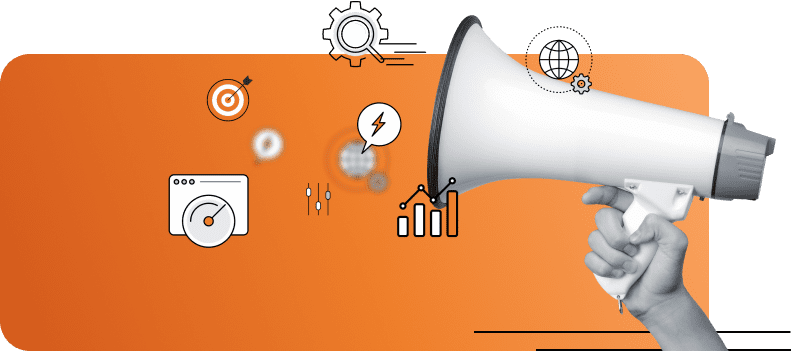In today’s hyper-connected world, businesses need innovative ways to capture consumer attention. One technology that’s transforming the landscape is geofencing. But what exactly is geofencing, and how can it be tailored to meet your business needs?
Geofencing involves creating virtual boundaries around specific locations, allowing businesses to gather valuable geofencing data that can drive targeted marketing strategies.
For instance, geofencing examples include sending promotional offers to customers’ smartphones when they enter a designated area or tracking foot traffic patterns to optimize store layouts.
Geofencing advertising is a powerful tool for marketers, providing precise targeting capabilities that align with local trends and preferences. By leveraging geo fencing for marketers, businesses can enhance customer engagement and boost brand visibility.
This comprehensive blog post will guide you through the various types of geofencing available, helping you choose the most suitable options for your enterprise.
Whether you’re a marketer eager to explore geofencing on Google or a business owner looking to refine your advertising strategy, this guide is your go-to resource.
Introduction to Geofencing
Geofencing is revolutionizing how businesses interact with their customers by using location-based technology. This innovative service employs GPS, RFID, Wi-Fi, or cellular data to create virtual boundaries around specific geographic areas.
When a mobile device crosses these boundaries, it triggers preset actions such as sending notifications or alerts. Understanding the fundamentals of geofencing is vital for businesses aiming to capitalize on its potential.
Why Geofencing Matters for Marketers
1. Precision Targeting
- Geofencing relies on accurate geofencing data to define boundaries and initiate actions effectively.
- Businesses can deliver personalized content to consumers within targeted locations.
2. Enhanced User Engagement
- By leveraging geofencing advertising, businesses can increase foot traffic and engagement.
- Examples include sending special offers to nearby customers or gathering data for improved insights.
3. Strategic Marketing Opportunities
- Geo fencing for marketers offers vast possibilities, from targeted promotions to customer data collection.
- Platforms like Google geofencing allow businesses to integrate this technology seamlessly.
By grasping how geofencing works, businesses can refine their search engine marketing strategies, engaging consumers right where they are and turning these interactions into powerful marketing tools.
Types of Geofencing Techniques
1. Radius-Based Geofencing
Radius-based geofencing is a powerful tool in the marketer’s arsenal, creating a virtual circle around a specific point of interest such as a local store or event venue. This geo fencing for marketers allows businesses to define a particular radius size, tailored to their goals and audience, effectively targeting potential customers nearby.
Benefits of Radius-Based Geofencing
- Increase Foot Traffic: By reaching potential customers who are within proximity, businesses can drive more visitors to their physical locations.
- Targeted Promotions: Geofencing advertising enables the delivery of tailored messages and offers, such as exclusive discounts, to those within the defined radius.
- Real-time Engagement: With geofencing data, you can engage with your audience in real time, enhancing customer experiences and increasing the likelihood of conversions.
Geofencing Examples in Action
- Sending push notifications to customers within a one-mile radius of a store, offering special incentives to visit.
- Utilizing geofencing Google tools to analyze and optimize campaigns based on location-based user behavior.
Incorporating these geofencing examples into your marketing strategy can significantly enhance your ability to attract local clientele and boost sales effectively.
2. Polygonal Geofencing
Polygonal geofencing is an advanced technique that empowers businesses to create custom-shaped boundaries by pinpointing multiple map locations. Unlike traditional circular geofences, polygonal geofencing provides the flexibility needed for irregularly shaped areas or targeted specific zones.
This technology can transform marketing strategies across various industries by effectively utilizing geofencing data.
Benefits of Polygonal Geofencing
- Precision Targeting: Allows businesses to precisely define geographical boundaries, ensuring they can reach specific customer segments in unique locations.
- Enhanced Marketing Campaigns: With targeted zones, marketers can tailor their messaging to resonate with the audience in those areas, improving engagement and conversions.
- Versatile Application: Suitable for multiple industries, polygonal geofencing examples range from real estate to retail, helping businesses accurately target audiences.
Practical Geofencing Examples
- Real Estate: A real estate company can highlight properties within specific neighborhoods using polygonal geofencing. This approach targets potential buyers seeking particular features or amenities.
- Retail Stores: Businesses can use geo fencing for marketers to direct promotions to customers near their stores, driving foot traffic and sales.
- Event Promotion: Event organizers can employ geofencing advertising to engage attendees within the event’s vicinity, enhancing overall experience and participation.
Polygonal geofencing provides marketers with a powerful tool to deliver tailored messages to their audience. By leveraging geofencing Google tools, businesses can ensure their ad campaigns are both effective and efficient, reaching the right people at the right time.
3. Beacon-Triggered Geofencing
Beacon-triggered geofencing is a cutting-edge technology that utilizes Bluetooth to detect when a mobile device is near a beacon. Unlike traditional geofencing methods, this technology offers precise location-based targeting, allowing marketers to engage with customers in real time.
Key Benefits
Harnessing the power of beacon-triggered geofencing provides several benefits:
- Enhanced Customer Engagement: By sending personalized offers and product recommendations based on a user’s in-store location, businesses can significantly improve customer interaction.
- Increased Sales: Targeted promotions based on browsing behavior can drive conversions and increase sales.
- Improved Customer Satisfaction: Delivering relevant content and offers can boost overall customer satisfaction.
Real-World Geofencing Examples
Consider the following geofencing examples:
- A clothing retailer uses beacon-triggered geofencing data to offer discounts on items customers are currently viewing.
- Restaurants implement geofencing advertising to send special offers to passersby who have previously shown interest in similar cuisines.
- Large retailers use geofencing Google services to map customer movements and enhance their merchandising strategies.
Incorporating beacon-triggered geofencing into your marketing strategy can transform the in-store experience. By leveraging geo fencing for marketers, you can create personalized, timely interactions that resonate with customers and drive business success.
4. Proximity-Based Geofencing
Proximity-based geofencing uses geofencing data to determine how close a device is to a specific location. This type of geofencing advertising allows businesses to send targeted notifications or alerts when users are near a predetermined point of interest.
Benefits of Proximity-Based Geofencing
Proximity-based geofencing offers several advantages, particularly for marketers:
- Increased Engagement: By reaching out to potential customers who are nearby but not yet within your store or venue, you can boost engagement and encourage visits.
- Timely Notifications: Sending real-time alerts allows businesses to capitalize on consumer spontaneity, driving foot traffic during peak hours.
- Higher Conversion Rates: Targeted offers and promotions often lead to increased conversion rates as consumers respond more positively to relevant, location-specific deals.
Geofencing Examples
Consider how these practical applications can enhance your marketing strategy:
- Restaurants can use proximity-based geofencing to send lunch specials to nearby office workers, enticing them to dine in.
- Retail Stores can alert shoppers about flash sales or exclusive deals as they walk by.
- Event Venues can inform attendees of last-minute ticket availability, enhancing event turnout.
By leveraging geo fencing for marketers, businesses can create tailored marketing strategies that effectively reach and convert potential customers. Platforms like geofencing Google offer robust tools to implement and track these campaigns.
5. Network-Based Geofencing
Network-based geofencing is a powerful tool for marketers looking to leverage geofencing data to enhance their strategies.
Unlike traditional methods that rely on GPS or Wi-Fi, this innovative approach utilizes cellular networks to determine the location of a device, making it ideal for businesses operating over large geographic areas.
Key Benefits
- Wide Coverage: Perfect for events like conferences or festivals where attendees are spread out over large venues.
- Real-Time Engagement: Allows for the delivery of timely updates and exclusive offers directly to attendees’ devices.
- Seamless Integration: Easily integrates with existing marketing platforms for a comprehensive geofencing advertising strategy.
Practical Applications
Here are some compelling geofencing examples using network-based technology:
- Event Notifications: Music festivals can use network-based geofencing to notify attendees about upcoming performances.
- Exclusive Offers: Organizers can send exclusive merchandise discounts to increase engagement and sales.
- Customer Experience: Create a more engaging and personalized experience for event-goers.
For marketers, understanding how to utilize geofencing Google capabilities can significantly enhance their ability to target, engage, and convert audiences through data-driven insights.
6. Geofencing with Google Ads
Geofencing advertising is revolutionizing how businesses reach potential customers by using location-based targeting. By leveraging geofencing data, companies can create highly targeted ads that resonate with local audiences. Here are some key benefits and geofencing examples for marketers:
Key Benefits of Geofencing Advertising
- Increased Brand Awareness: Reach users within a specific geographic area, ensuring your message is seen by those most likely to engage.
- Targeted Messaging: Tailor ad content to reflect local culture and preferences, creating a stronger connection with your audience.
- Enhanced Foot Traffic: Drive more visitors to physical locations by targeting users nearby.
Geofencing Examples for Marketers
- Local Retail Promotion: A boutique clothing store uses geofencing Google Ads to offer exclusive discounts to nearby shoppers, increasing store visits.
- Event Marketing: A concert venue targets ads to people in the vicinity, promoting upcoming shows and selling more tickets.
- Restaurant Specials: A local eatery promotes happy hour deals to passersby, enticing them to stop in for a drink.
For marketers keen on exploring geo fencing for their campaigns, geofencing offers a strategic advantage to engage with audiences effectively and drive desired actions.
Geofencing offers businesses a powerful tool to enhance customer engagement and drive sales. By understanding the different types of geofencing techniques, such as those found in geofencing examples, businesses can tailor their marketing strategies to effectively reach their target audience.
For instance, employing radius-based geofencing can attract nearby customers, while leveraging beacon-triggered geofencing enhances the in-store experience. This application of geofencing data allows marketers to create personalized interactions that resonate with consumers.
Additionally, using resources like geofencing Google can further optimize these strategies, providing geo fencing for marketers with endless possibilities to connect with their customers in meaningful ways.
To explore the full potential of geofencing and learn how it can benefit your business, consider partnering with experts in the field. Their insights and expertise can help unlock the true advantages of geofencing, driving success and growth for your business.









